The order of the toppings is one of the most crucial factors while making pizza. The improper order of topping application might lead to a soggy crust, undercooked toppings, or charred toppings.
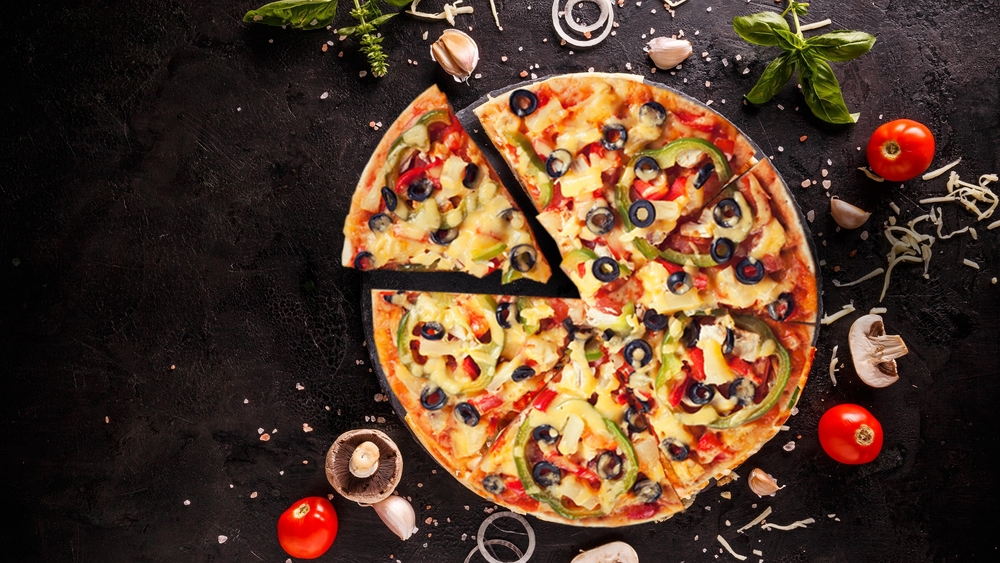
So, what toppings should go on a pizza in what order?
Starting with the sauce is crucial in the first place. Forming a barrier between the crust and the toppings, this will prevent the crust from becoming soggy. It’s time to add the cheese after the sauce.
The cheese must be applied before any other toppings in order to keep everything in place and stop the toppings from falling off. It’s time to add the meat and vegetables at this point.
Since the meat will take longer to cook than the vegetables, it is preferable to add it first. When the pizza is ready to be taken out of the oven, everything will be perfectly cooked.
The Importance of the Order of Toppings
When it comes to making a delicious pizza, the order in which you add your toppings is just as important as the toppings themselves. Getting the order right can make the difference between a soggy, undercooked pizza and a crispy, perfectly cooked one.
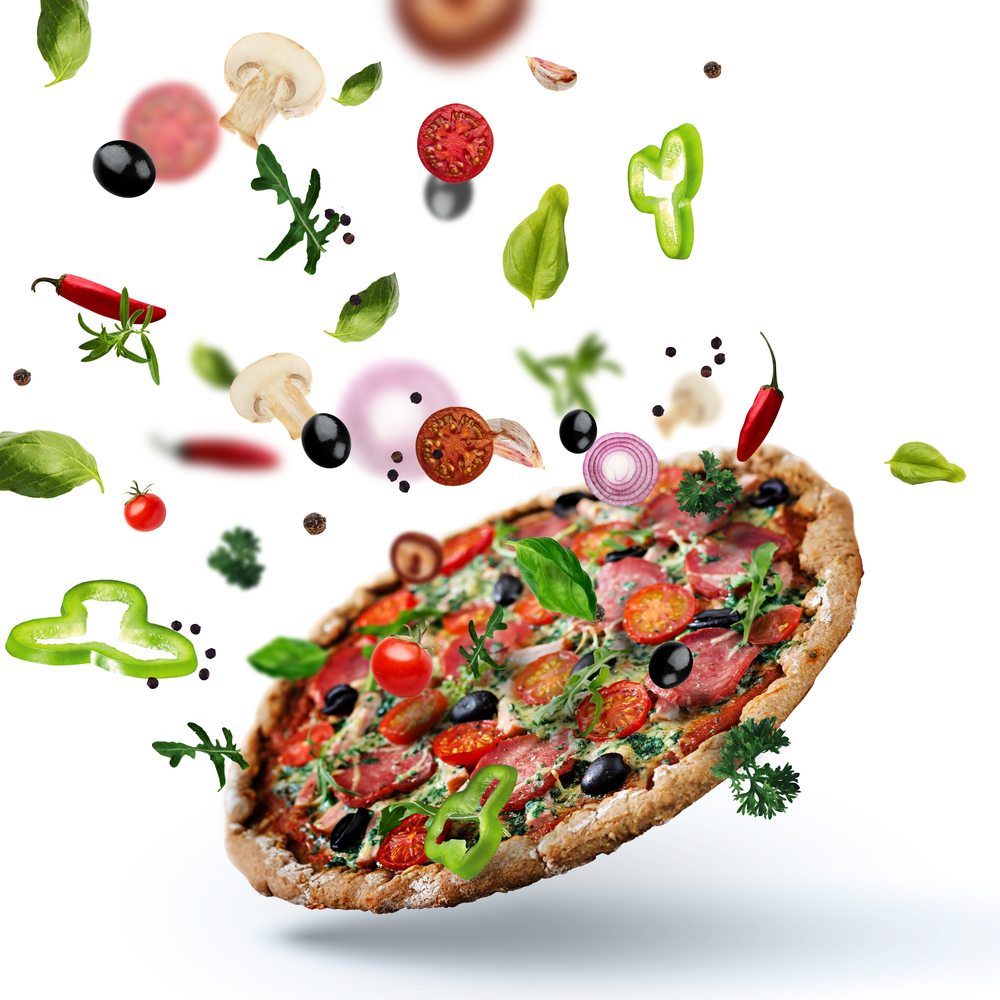
In this section, we’ll explore why the order of toppings is so important and how it affects the texture, flavor, and cooking time of your pizza.
Texture and Flavor
The order of toppings can greatly affect the texture and flavor of your pizza. If you add wet toppings like tomato sauce or vegetables before the cheese, you risk ending up with a soggy crust. This is because the moisture from the toppings will seep into the crust, making it soft and chewy instead of crispy.
On the other hand, if you add dry toppings like pepperoni or mushrooms before the cheese, they may not cook properly and could end up burnt or dried out.
The order of toppings can also affect the overall flavor of your pizza. For example, if you add strong-flavored toppings like garlic or onions before the cheese, they may overpower the other flavors and make the pizza taste unbalanced.
By adding the cheese first, you create a barrier that helps to distribute the flavors more evenly across the pizza.
Cooking Time
The order of toppings can also affect the cooking time of your pizza. If you add toppings that require a longer cooking time, like raw vegetables or meats, before the cheese, they may not cook properly and could end up undercooked.
This is because they don’t have enough surface area to cook properly when covered by cheese. By adding the cheese first, you give the toppings more surface area to cook and ensure that they cook evenly.
On the other hand, if you add toppings that cook quickly, like pre-cooked meats or thinly sliced vegetables, after the cheese, they may end up overcooked and dried out. This is because they don’t have as much protection from the cheese and may cook too quickly.
By adding these toppings before the cheese, you ensure that they cook just enough to be perfectly cooked and flavorful.
The order of toppings is a crucial part of making a delicious pizza. By considering the texture, flavor, and cooking time of your toppings, you can create a pizza that is perfectly crispy, well-balanced, and full of flavor.
So, next time you’re making a pizza, remember to pay attention to the order in which you add your toppings, and enjoy the perfect slice every time!
Exceptions to the Rule
While there are general guidelines for the order of pizza toppings, there are some exceptions to the rule. In this section, we will discuss some of the situations where the usual order may not apply.
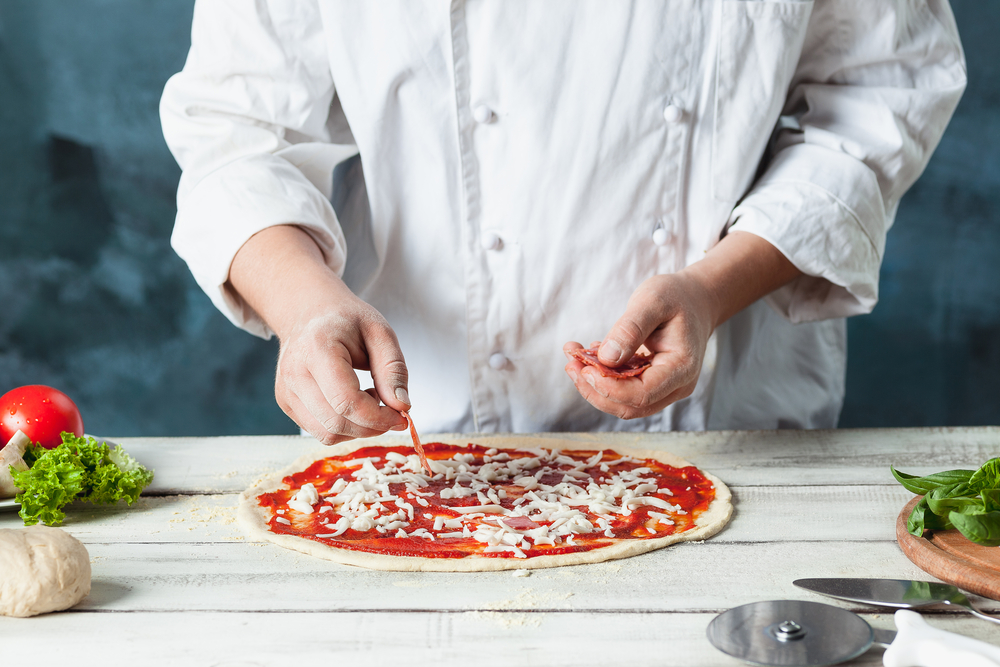
Garnishes
Garnishes, such as fresh herbs or arugula, should always be added after the pizza comes out of the oven. This is because they are delicate and can wilt or burn if exposed to the high heat of the oven. Instead, sprinkle them over the pizza right before serving to add a pop of color and flavor.
Cheese First
While it is generally recommended to add sauce before cheese, some pizza styles, such as Chicago deep dish, require the opposite order.
In this case, the cheese is added first to prevent the sauce from making the crust soggy. If you are making a deep-dish pizza, consider adding the cheese first.
Parmesan and Cheddar
Parmesan and cheddar are two toppings that can be added either before or after baking. If you want them to melt and blend with the other toppings, sprinkle them on before baking.
However, if you want them to stand out and add a crispy texture, add them after baking.
In summary, while there are general guidelines for the order of pizza toppings, there are some exceptions to the rule. Garnishes should always be added after baking, while cheese can be added first in some pizza styles.
Parmesan and cheddar can be added either before or after baking, depending on the desired effect.
Recommended Order of Toppings
When it comes to making the perfect pizza, the order in which you add your toppings is just as important as the toppings themselves. In this section, we will cover the recommended order of toppings for your pizza.
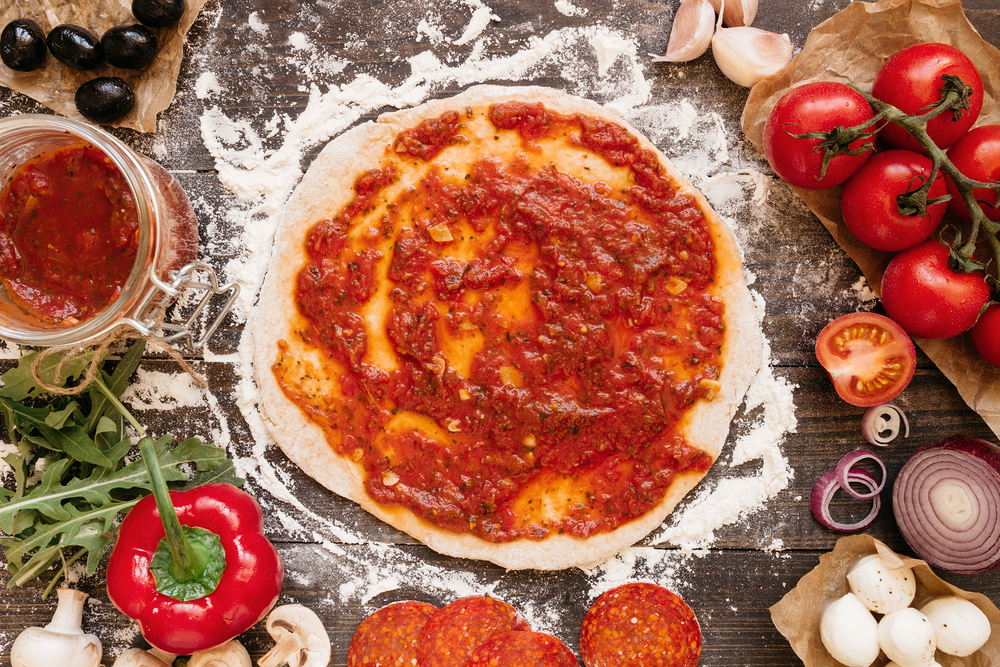
Cheese Toppings
We recommend starting with a layer of cheese as the base of your pizza toppings. This will help to hold the other toppings in place and create a delicious, gooey layer of melted cheese on top of your pizza.
You can use any type of cheese you like, but mozzarella is the most common choice.
Meat Toppings
Next, add your meat toppings. We recommend starting with thin meats, such as pepperoni or ham, and layering them on top of the cheese. This will help to ensure that they cook evenly and don’t burn.
If you’re using larger pieces of meat, such as sausage or chicken, make sure to cook them first before adding them to your pizza.
Vegetable Toppings
After your meat toppings, it’s time to add your vegetables. We recommend starting with vegetables that cook quickly, such as onions or mushrooms, and layering them on top of the meat.
This will help to ensure that they cook evenly and don’t become too soggy. You can also add vegetables that don’t need to be cooked, such as tomatoes or olives after your pizza is done baking.
Garnishes
Finally, it’s time to add your garnishes. This can include anything from fresh herbs to a drizzle of balsamic glaze. We recommend adding your garnishes after your pizza is done baking, as they can easily burn in the oven.
The order in which you add your pizza toppings is just as important as the toppings themselves. By following our recommended order of toppings, you can create a delicious, perfectly balanced pizza every time.
Pizza Sauce and Dough
When it comes to making a delicious pizza, the sauce and dough are the foundation of the pizza. In this section, we’ll cover everything you need to know about making the perfect pizza sauce and dough.
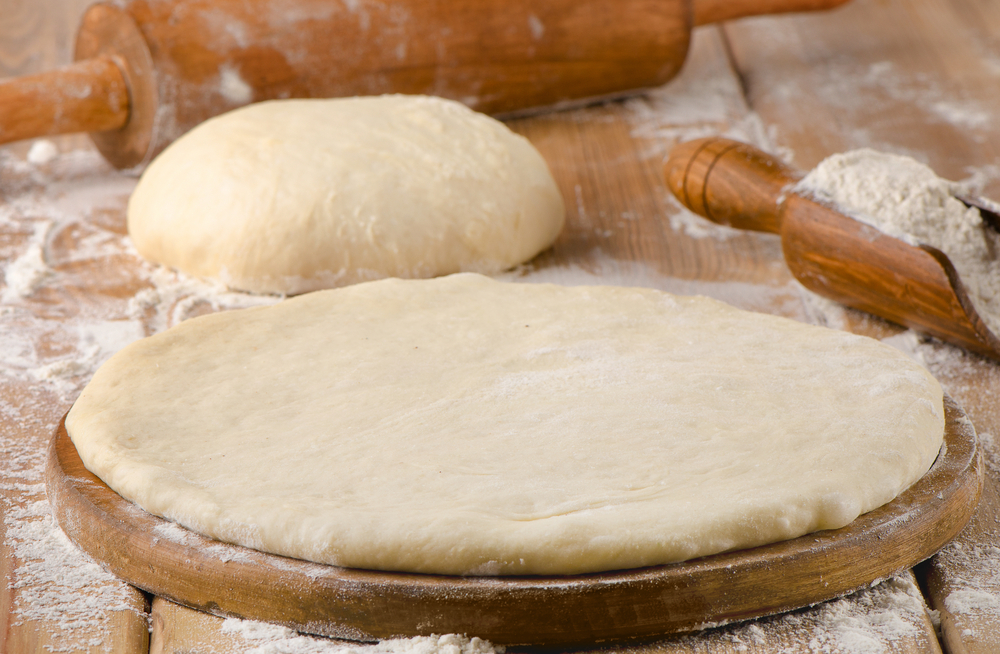
Pizza Sauce Recipe
A good pizza sauce is the key to a great pizza. There are many different pizza sauce recipes out there, but we’ve found that a simple, classic tomato sauce works best. Here’s our go-to pizza sauce recipe:
| Ingredients | Amount |
|---|---|
| Canned crushed tomatoes | 28 oz |
| Olive oil | 2 tbsp |
| Garlic, minced | 2 cloves |
| Salt | 1 tsp |
| Sugar | 1 tsp |
- Heat the olive oil in a saucepan over medium heat.
- Add the minced garlic and sauté for 1-2 minutes until fragrant.
- Add the crushed tomatoes, salt, and sugar to the saucepan.
- Simmer the sauce for 15-20 minutes until it has thickened.
Easy Pizza Sauce Recipe
If you’re short on time and don’t want to make a sauce from scratch, there are plenty of easy pizza sauce recipes out there. One of our favorites is simply mixing equal parts tomato sauce and tomato paste with a pinch of salt and sugar.
Pizza Dough Recipe
The dough is just as important as the sauce when it comes to making a great pizza. Here’s our favorite pizza dough recipe:
| Ingredients | Amount |
|---|---|
| All-purpose flour | 3 cups |
| Active dry yeast | 1 packet |
| Salt | 1 tsp |
| Sugar | 1 tsp |
| Olive oil | 2 tbsp |
| Warm water | 1 cup |
- In a large mixing bowl, combine the flour, yeast, salt, and sugar.
- Add the olive oil and warm water to the bowl.
- Mix the dough until it comes together into a ball.
- Knead the dough for 5-10 minutes until it is smooth and elastic.
- Cover the dough and let it rise for 1-2 hours until it has doubled in size.
Rolling Pin and Pizza Peel
To make the perfect pizza, you’ll need a few tools. A rolling pin is essential for rolling out the dough, and a pizza peel is necessary for transferring the pizza to the oven. Make sure to dust the pizza peel with cornmeal to prevent the pizza from sticking.
In summary, the sauce and dough are the foundation of a great pizza. With our simple pizza sauce and dough recipes, you’ll be well on your way to making the perfect pizza.
Don’t forget to use a rolling pin and pizza peel to make the process easier.
Cooking the Pizza
When it comes to cooking the perfect pizza, there are a few factors to consider. In this section, we will cover the different methods for cooking pizza, including pizza ovens, baking pizza, and using a pizza stone.
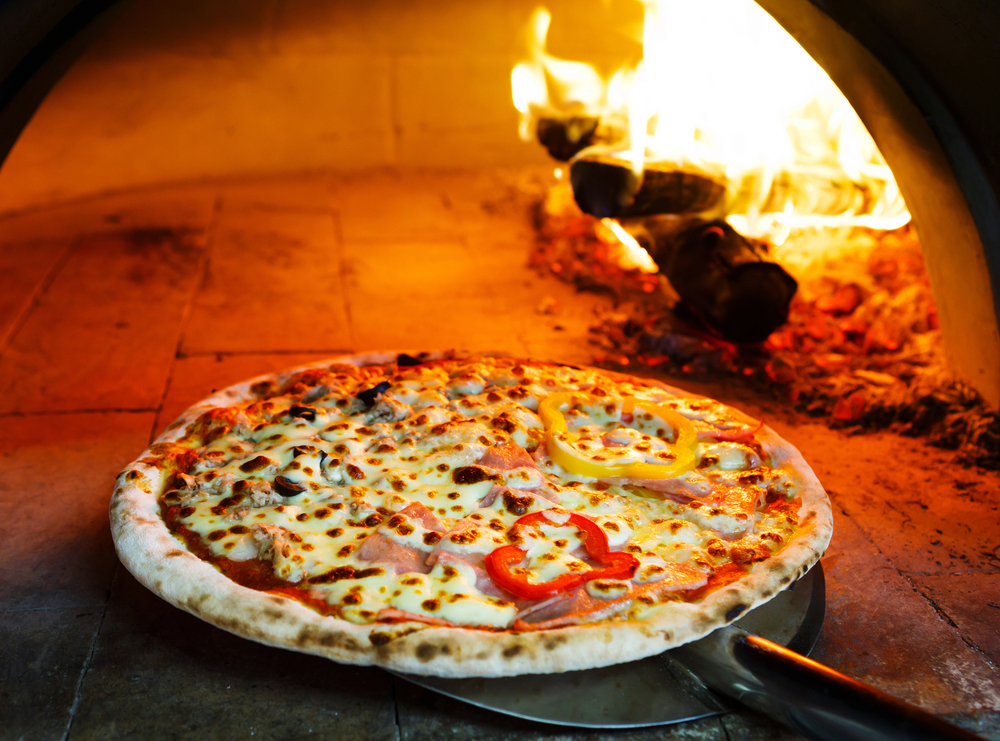
Pizza Oven
A pizza oven is a great option for cooking pizza, especially if you are looking for a restaurant-quality result. Pizza ovens are designed to cook pizzas at high temperatures, which helps to create a crispy crust and evenly cooked toppings.
There are different types of pizza ovens available, including wood-fired ovens, gas ovens, and electric ovens. Each type of oven has its own benefits and drawbacks, so it is important to choose the one that best suits your needs and preferences.
Baking Pizza
Baking pizza in a conventional oven is a popular method for cooking pizza at home. To achieve the best results when baking pizza, it is important to preheat the oven to the appropriate temperature and place the pizza on the middle rack.
When baking pizza, it is important to keep an eye on the pizza to ensure that it is not overcooked or undercooked. You can also experiment with different baking times and temperatures to find the perfect combination for your pizza.
Pizza Stone
Using a pizza stone is another popular method for cooking pizza at home. A pizza stone is a flat, round stone that is designed to absorb and distribute heat evenly, which helps to create a crispy crust.
To use a pizza stone, you will need to preheat it in the oven before placing the pizza on top. It is important to follow the manufacturer’s instructions for using the pizza stone to ensure that you achieve the best results.
There are different methods for cooking pizza, including pizza ovens, baking pizza, and using a pizza stone. Each method has its own benefits and drawbacks, so it is important to choose the one that best suits your needs and preferences.
With a little experimentation, you can achieve the perfect pizza every time.
Different Styles of Pizza
When it comes to pizza, there are many different styles to choose from. Each style has its own unique characteristics, including the way the toppings are added.
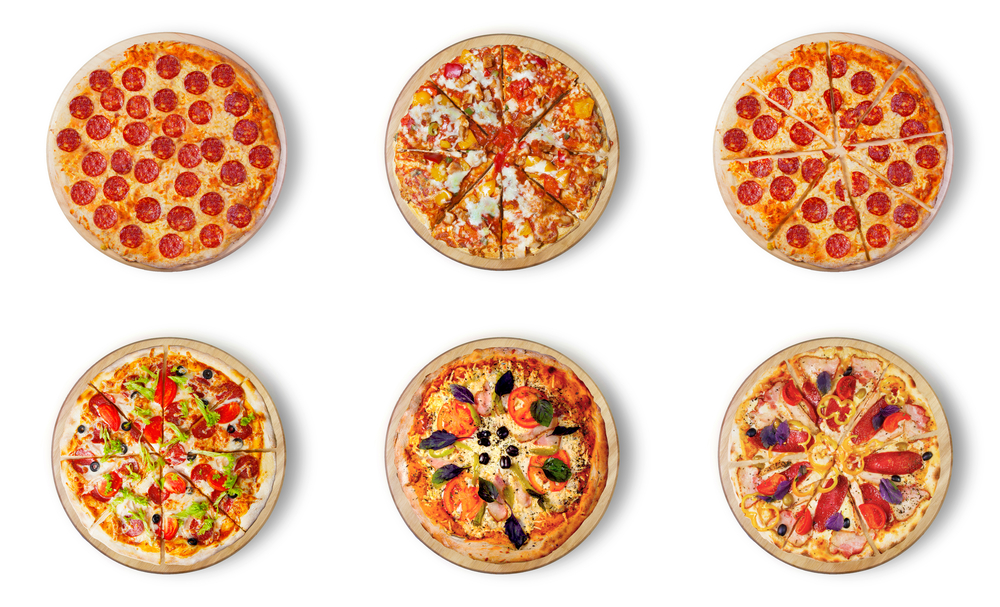
In this section, we will explore some of the most popular styles of pizza and how their toppings are typically arranged.
Italian Pizzas
Italian pizzas are known for their thin, crispy crusts and simple, fresh toppings. The toppings are typically added in a specific order, starting with the sauce, followed by cheese, and then any additional toppings. This ensures that the toppings cook evenly and do not burn.
Chicago-Style Deep-Dish Pizza
Chicago-style deep-dish pizza is known for its thick, buttery crust and generous toppings. The toppings are added in reverse order, with the cheese on the bottom, followed by any meats or vegetables, and then the sauce on top.
This helps to prevent the crust from becoming soggy and ensures that the toppings are evenly distributed.
Sicilian-Style Pizza
Sicilian-style pizza is known for its thick, fluffy crust and hearty toppings. The toppings are typically added in a specific order, starting with the sauce, followed by cheese, and then any meats or vegetables.
The final layer is typically a sprinkle of Parmesan cheese or breadcrumbs, which helps to add texture and flavor.
No matter what style of pizza you prefer, the order in which the toppings are added can have a big impact on the final product.
By following the traditional methods for each style, you can ensure that your pizza turns out perfectly every time.
Conclusion
We have learned that the order of putting toppings on a pizza is crucial to achieving the perfect pizza. The first step is to put the sauce on the pizza, followed by the cheese.
After that, you can add your desired toppings, starting with meat toppings and then moving to vegetables. Finally, you can add the pepperoni on top.
By following this order, you can avoid some of the drawbacks that come with putting toppings on a pizza in the wrong order. For example, adding vegetables before the meat can lead to the vegetables becoming overcooked and dried out by the time the cheese is fully melted.
On the other hand, adding meat before vegetables allow the moisture to evaporate in the oven, making for a crispy crust and well-baked toppings.
It is also important to note that you can alter the order of toppings based on your personal preferences. For example, some people prefer to add their meats and vegetables first, before topping with cheese.
However, this can lead to a soggy crust and boiled toppings. So, it is important to experiment and find the order that works best for you.
Finally, we should avoid some of the common mistakes that people make when putting toppings on a pizza. For example, overloading the pizza with too many toppings can lead to a soggy crust, while using too little sauce can result in a dry pizza.
So, it is important to find the right balance of toppings and sauce to achieve the perfect pizza.
In summary, the order of putting toppings on a pizza is essential to achieving the perfect pizza. By following the correct order, we can avoid some of the drawbacks, experiment with different orders, and avoid common mistakes that people make when making pizza.







Add comment